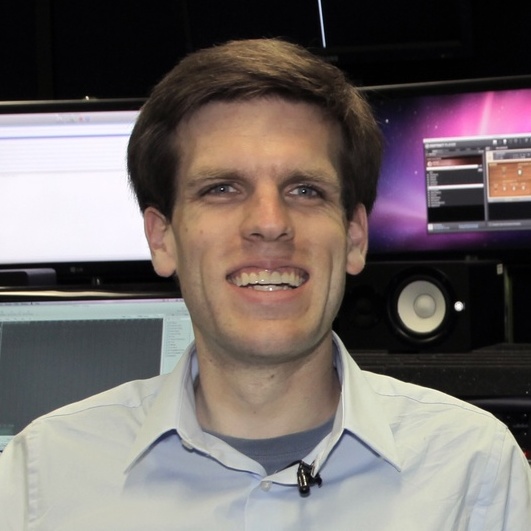Demo-Poster Entry [
clear filter]
11:30am EDT
Poster 1.17
Exhibitors 
Musician, Technician, Magician, Institute of Sonology, Royal Conservatoire in The Hague
Musician, improviser, composer, born in Verona (Italy), currently based in The Hague (NL). His research is focused on developing an improvisational language in the electro-acoustic scenario, where the electronic manipulations and the acoustic sounds merge seamlessly in the continuum...
Read More →
11:30am EDT
Poster 1.18
Exhibitors 
PhD student, Augmented Instruments Lab, C4DM, QMUL
Jack Armitage is a PhD student in the Augmented Instruments Lab, Centre for Digital Music, Queen Mary University of London. His topic is on supporting craft in digital musical instrument design, supervised by Dr. Andrew McPherson.
12:00pm EDT
12:00pm EDT
12:00pm EDT
Demo 3.03
Exhibitors 
Assistant Professor, Louisiana State University
12:00pm EDT
12:00pm EDT
Demo 3.05
Exhibitors KC
Undergrad, University of Virginia
12:00pm EDT
12:00pm EDT
Demo 3.07
Exhibitors 
Doctoral Candidate, Louisiana State University
12:00pm EDT
Demo 3.08
Exhibitors 
University of Gothenburg, Aalborg University
Palle Dahlstedt (b.1971), Swedish improviser, researcher, and composer of everything from chamber and orchestral music to interactive and autonomous computer pieces, receiving the Gaudeamus Music Prize in 2001. Currently Obel Professor of Art & Technology at Aalborg University...
Read More →
12:00pm EDT
12:00pm EDT
Demo 3.10
Artists KW
Kristina Warren is a composer, improviser, and critical maker whose multimodal practice - from building and playing unique analog-digital instruments, to composing for and with chamber ensembles - explores diverse acts of listening and making noise. Her first solo album, filament...
Read More →
12:00pm EDT
12:00pm EDT
Poster 3.02
Exhibitors DF
Research Fellow, Norwegian University of Science and Technology
12:00pm EDT
Poster 3.03
Exhibitors 
Postdoctoral Research Assistant, Queen Mary University of London
12:00pm EDT
Poster 3.04
Exhibitors 
Louisiana State University
Embedded instruments, software for emergent media experiences, audiovisual installations, composition, modular synthesizers, the TV show “Perfect Strangers. ”
12:00pm EDT
12:00pm EDT
12:00pm EDT
12:00pm EDT
12:00pm EDT
Poster 3.09
Exhibitors 
Assistant Professor, University of Central Florida
Boston native Matthew Mosher is an intermedia artist and mixed methods research professor who creates embodied experiential systems. He received his BFA in Furniture Design from the Rhode Island School of Design in 2006 and his MFA in Intermedia from Arizona State University in 2012...
Read More →
12:00pm EDT
12:00pm EDT
Poster 3.11
Exhibitors 
Postdoctoral Research Assistant, Queen Mary University of London
12:00pm EDT
Poster 3.13
Exhibitors 
Research Specialist, Princeton University

Director of Electronic Music, Princeton University
Instrument designer, composer, improvisor.
12:00pm EDT
Poster 3.14
Exhibitors ES
Louisiana State University|Baton Rouge|Louisiana|United States
12:00pm EDT
Poster 3.15
Exhibitors 
Reader, Queen Mary University of London

Researcher, Queen Mary University of London
Hi! I'm Jon from Queen Mary University of London. I'm a Musician, Artist and Researcher. My current research investigates tacit understandings of instrumental interaction with materials and sensors. Talk to me about: Instrumental interaction - Sensors - NIMEs - DMIs - Electronic Music...
Read More →
12:00pm EDT
Poster 3.16
Exhibitors 
PhD student, Augmented Instruments Lab, C4DM, QMUL
Jack Armitage is a PhD student in the Augmented Instruments Lab, Centre for Digital Music, Queen Mary University of London. His topic is on supporting craft in digital musical instrument design, supervised by Dr. Andrew McPherson.